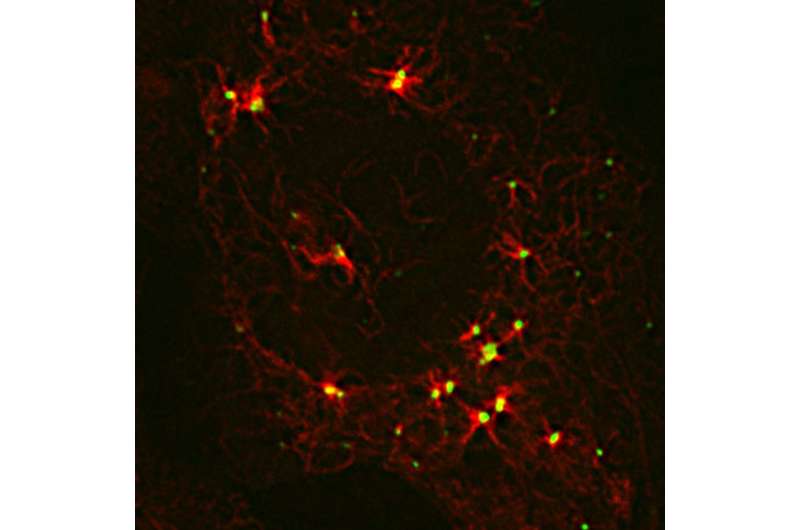Shedding light on a shadowy organizational hub in cells

On a cellular level, we are all hanging on by delicate threads. All cells are crisscrossed by a network of strands called microtubules, which act as railroad tracks that move cargo around the cell, as winch cables that separate chromosomes during cell division, and as scaffolding components that give a cell its shape.
Because of its essential role in the cell cycle, microtubule assembly is the target of essential anti-cancer chemotherapies (paclitaxel, for example), which stop out-of-control cell division by destabilizing microtubules. Now, researchers have shed light on the role that a large, enigmatic protein plays in assembling microtubules, paving the way for better treatments. The results of the research are published in the Dec. 15 issue of the Journal of Biological Chemistry.
In 1999, James Goldenring's research team at Vanderbilt University showed that protein kinase A¬¬-anchoring protein 350 (AKAP350) is a component of the centrosome, a center of microtubule organization in human cells. Later, the team showed that microtubules did not efficiently form without AKAP350. But the way in which AKAP350 regulated microtubule formation was difficult to understand, largely because of the technical challenges posed by AKAP350's heft.
"Since this protein is so huge, it's very difficult to study it," said Elena Kolobova, the research scientist in Goldenring's laboratory who led the new study. "A few years ago, we finally came to develop synthetic constructs of (AKAP350), which allowed us to go to the next level of evaluation and function."
Using a combination of detailed biochemical analyses and super-resolution microscopy, the team finally was able to gain some understanding of the complex roles that AKAP350 plays in regulating microtubules in cells. AKAP350 formed a physical bridge spanning components of the centrosome. And AKAP350 appeared to recruit multiple proteins involved in building microtubules, coordinating their function in one spot.
"I like to call this thing Deep Space Nine. Everybody comes to hang out at AKAP350," Goldenring said. "I think we've only scratched the surface of the structural organization that this protein is probably providing."
Mutations in AKAP350 have been associated with cardiac arrhythmias, so it will be of interest to see whether the protein's role in microtubule assembly contributes to proper heart function as well.
"I think (AKAP350) is a fundamental regulator of cell function," Goldenring said. "So we need to know a lot more about this protein before we can even begin looking at what it might mean for disease."
More information: Elena Kolobova et al, The C-terminal region of A-kinase anchor protein 350 (AKAP350A) enables formation of microtubule-nucleation centers and interacts with pericentriolar proteins, Journal of Biological Chemistry (2017). DOI: 10.1074/jbc.M117.806018
Journal information: Journal of Biological Chemistry


















